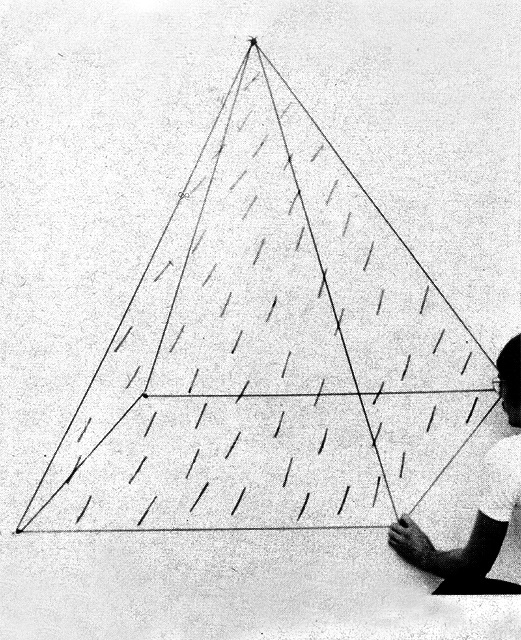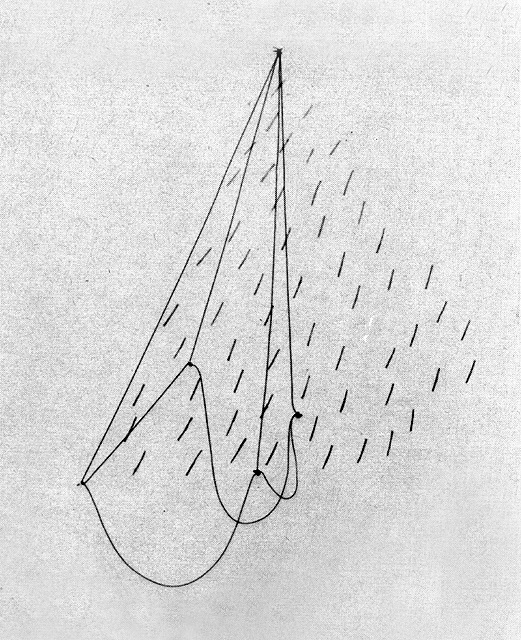A self-interview by Peter Tepe | Section: Interviews
Summary: In an interview with himself, Peter Tepe clarifies how he got interested in the intersections of philosophy/literary studies and the visual arts, and describes the ways his scientific and artistic activities interact. According to Tepe, artistic development consists of five phases generating what he calls the programme of informal construction.
Foreword by the publisher
The following article retraces my career in the crossover between science and visual arts in the form of a self-interview: I myself formulate several questions that could have been asked in an interview conducted by another person, and answer them. Doing so, I will introduce the reader to some of my artistic works created since 2013. For this purpose, I will select some representative examples from several series and explain their prevailing peculiarities.
Becoming a border crosser
A border crosser between science and art is what the online journal calls an individual working both scientifically and artistically in the field of fine arts.
I belong to this group, too.
Speaking about the personal career of such an individual, we discern three different types, which help us to decide whether he or she, for a certain period of time, gives preference to either the scientific or the artistic activity or if there is a general balance between them. A scientist/artist works mainly in the scientific field, whereas an artist/scientist gives preference to artistic aspects. The fifty-fifty type works as much in science as in the arts. Where would you situate yourself?
Even if it took me a longer time of personal development to become one, I would define myself as a scientist/artist.
Can you describe the stages of your personal and professional development a little bit closer?
After my Abitur in Osnabrück, I started to study painting with Karl Otto Götz at the Düsseldorf Art Academy in the winter term 1968/69. After three or four semesters, I switched to the Heinrich Heine University Düsseldorf (which was not yet called like this at that time). Enrolled in philosophy and German philology, I did both my PhD and my habilitation in philosophy. Yet, I eventually ended up at the department for recent German philology, where I was employed from the late 1970s to the end of my academic service on December 31th 2013.
Someone doing research in philosophy as well as in literary science can be called a border crosser, too. So, before working in the crossover between science and visual arts, you had already worked in the crossover between philosophy and literary science.
This is true. I wanted to render this quite unusual constellation, which included a continuous teaching and examination activity in two academic disciplines, productive for research and teaching. Philosophical and literary interests were to be brought into fruitful interaction. This lead to the foundation of the interdisciplinary focus of study and research Mythos / Ideologie (Myth / Ideology) in 1987. Later, in the year 2000 the focus was enlarged to Mythos, Ideologie und Methoden (Myth, Ideology and Methods) because I wanted to take account of the growing importance of literary theory and methods of analysis.[1] I spent most of my 35 year professional career at Düsseldorf University working as both a literary scientist and a philosopher, at times additionally as a media scholar.
The study focus, which continues to exist for the PhD courses, is an institution based on the principle of multidisciplinarity. In fact, the 30 interdisciplinary classes with lecturers from philosophy, history, history of the arts and educational sciences reveal a general crossover tendency.[2]
Phases of the artistic career
The striving to transcend the limits of the various disciplines can thus be considered an essential feature of your personality. What about the artistic part of your character? Which phases of your artistic work can one distinguish?
I can count five:
Phase 1 (1965−1968): My activities at secondary school, which were decisively encouraged by my art teacher Veit Lindenmeyer.
Phase 2 (1968−1970): My studies in Karl Otto Götz’s class at the Düsseldorf Art Academy.
Holding the knots of the pending strings so that they enclose the underlying structure, one will obtain the illusion of a pyramid.
Phase 3 (1970−1975): My artistic activities during my studies at university as well as during and after my PhD.
Phase 4 (1989−1995): My artistic activities during the development phase of the focus Mythos, Ideologie und Methoden.
Phase 5 (from 2013 onwards): The resumption of my artistic work during and after my last year of service.
In which phases can we consider you as a scientist/artist?
In phases 4 and 5: At that time, my work was predominantly scientific – including my activities as an editor of several academic periodicals[3] − but still I kept on working as an artist, even though on a smaller scale. From 1976 to 1988 and from 1996 to 2012, I was working only as a scientist (who continued to be interested in arts and thus was longing to give the own artistic activities some more space).
Please describe the stages of development of your individual constellation in closer detail.
During phase 1, I was not only working artistically, but also highly interested in issues of art theory and aesthetics, which I then used, directly or indirectly, for my work as a painter. In addition to this, I read and studied several philosophers on my own, Nietzsche above all. At my secondary school, philosophy had not been taught at all.
During phase 2, at the Düsseldorf Art Academy, I used to participate in the classes of philosopher Walter Warnach. So you can say that my artistic studies included scientific aspects, too (philosophy in general, philosophy of art and aesthetics in particular, history of art).
However, in 1969/70, my inner quest for knowledge took on a life on its own, so that I increasingly started dealing with issues that are somehow preliminary to philosophy of art and aesthetics and that could thus not be integrated into my artistic practice easily. I was particularly fascinated by the history of thought from Kant to Fichte, Schelling and Hegel as well as by present-day philosophy, such as for instance the controversies between the Frankfurt School and Critical Rationalism.
Moving to university
The reading of philosophical texts became more and more important and the dealing with philosophical issues gained preponderance over artistic practice. This lead me to attend, as a guest auditor, lectures and seminars at the faculty of philosophy which was still being established at Düsseldorf University in those days. My fascination with philosophy grew so strong that I eventually switched to university.
How to cite this article
Peter Tepe (2016): Border Crosser between Science and Visual Arts. w/k–Between Science & Art Journal. https://doi.org/10.55597/e1610




Be First to Comment